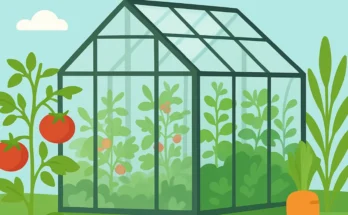When it comes to natural remedies, the world of shops offers an immense source of mending remedies. Herbal remedies have been used as part of numerous health and heartiness traditions in both ancient and ultramodern medicine.However,” What are the 10 medicinal shops?”, you’re on your way to learning about the natural drugstore set up in the factory world, If you are asking. In this composition, you will learn about the top 10 medicinal shops known for their medicinal rates, their use, and their benefits grounded on tradition and wisdom.
1. Aloe Vera( Aloe barbadensis miller)
Aloe vera is occasionally appertained to as the” factory of eternity,” which is fluently understood.
Medicinal parcels
- Anti-inflammatory
- Antioxidant
- Antibacterial
Common Uses
- Calming sunburns
- Crack mending( minor cuts and injuries)
- Digestive aid( aloe vera juice)
Aloe vera contains composites, similar as acemannan and numerous enzymes that can be salutary in reducing inflammation and, accordingly, speeding up skin rejuvenescence.
2. gusto( Zingiber officinale)
gusto is a root known for both its strong flavor and potent health benefits. It’s one of the most common spices used in traditional drug.
Medicinal parcels
- Anti-nausea
- Anti-inflammatory
- Antioxidant
Common uses
- Restores the body’s perceptivity to nausea and movements sickness.
- May reduce sore muscles and pains.
- May aid in digestion.
Gingerols, the main chemical ingredients in gusto, have significantanti-inflammatory and antioxidant parcels.
3. Turmeric( Curcuma longa)
Turmeric is the golden spice that has taken the health world by storm, and I believe it has earned its place on this list.
Medicinal parcels
- Anti-inflammatory
- Antioxidant
- Antimicrobial
Common uses
- May reduce inflammation in joints of arthritis.
- Has benefits for brain health.
- May cover heart health.
Curcumin, the active component in turmeric is largely known for itsanti-inflammatory and antioxidant parcels.
4. Peppermint( Mentha piperita)
Peppermint is not just a flavoring agent in candies and toothpaste, but a highly medicinal plant.
Medicinal parcels
- Antispasmodic
- Analgesic
- Antimicrobial
Common uses:
- May help relieve digestive issues such as gas and bloating.
- May relieve headaches.
- May help reduce respiratory congestion.
Menthol, found in peppermint oil, creates a cooling effect and may soothe the entire digestive tract.
5. Echinacea (Echinacea purpurea)
Echinacea is a flowering plant that has been traditionally used by Native Americans to treat wounds and infections.
Medicinal parcels
- Immune boosters
- Antiviral
- Anti-inflammatory
Common Uses:
- Promoting relaxation and sleep
- Acne treatment
- Reducing headaches
Lavender contains menthol, which is responsible for its pleasant aroma as well as its calming effect.
6. Garlic (Allium sativum)
Garlic isn’t just for taste – it is one of the strongest medicinal plants.
Medicinal Properties:
- Antibacterial
- Antifungal
- Cardioprotective
Common Uses:
- Lower blood pressure
- Reduce cholesterol levels
- Fight infections
Garlic contains allicin (a sulfur compound) which is responsible for its smell and health properties.
7. Chamomile (Matricaria chamomilla)
Chamomile is famous for its calming effect, and is commonly used as a tea.
Medicinal Properties:
- Sedative
- Anti-inflammatory
- Antioxidant
Common Uses:
- Promote sleep
- Menstrual pain
- Digestive disorders
Chamomile contains apigenin, an antioxidant that binds to certain receptors in your brain that promote sleepiness and reduces anxiety.
8. Ginseng (Panax ginseng)
Ginseng is a mainstay in traditional Chinese medicine and is sometimes used to boost physical and mental performance.
Medicinal Properties:
- Adaptogenic
- Immune-boosting
- Antioxidant
Common Uses:
- Increase energy
- Enhance cognitive function
- Boost the immune system
Ginsenosides are the primary active compounds responsible for ginseng’s stimulant actions.
9. Lavender (Lavandula angustifolia)
Lavender is known for its smell and calming effect.
Medicinal Properties:
- Anxiolytic
- Sedative
- Antimicrobial
Common Uses:
- Reducing stress and anxiety
- Sleeping better
- Treating minor burns and insect bites
Lavender oil can be used in aromatherapy to relieve tension or stress and soothe.
10. Azadirachta indica, or neem
Neem is a potent medicinal plant with many applications that is frequently referred to as the “village pharmacy” in India.
Medicinal Properties:
- Antimicrobial
- Antifungal
- Antiparasitic
Common Uses:
- Taking care of skin disorders like eczema and acne
- Dental hygiene (found in mouthwashes and toothpaste)
- Controlling diabetes
Nimbin and azadirachtin, two substances found in neem, are well-known for their strong antibacterial properties.
The Benefits of Using Medicinal Plants
A natural and frequently safer substitute for synthetic medications is provided by medicinal plants. In general, they are more accessible and less expensive, particularly in areas with limited access to contemporary healthcare. The efficacy of botanical remedies is further supported by the fact that many pharmaceutical medications are made from compounds that are found in plants.
Economic and Environmental Advantages
It can be economical and environmentally beneficial to grow your own medicinal plants. It minimizes packaging waste and lessens your dependency on processed goods. Many of these plants can be grown indoors in pots or even in tiny gardens.
How to Utilize Medicinal Plants Safely
Despite being natural, medicinal plants should only be used sparingly. The following advice will help to guarantee safe use:
- Speak with a healthcare professional: Before beginning any herbal treatment, always get advice from a physician or a licensed herbalist.
- Begin with modest dosages: Keep an eye on your body’s response, particularly if you’re new to using herbal remedies.
- Be aware of interactions: Prescription drugs and certain herbs may interact.
- Use the appropriate plant parts: Different parts (leaves, roots, and flowers) have different functions.
Conclution
What are the ten medicinal plants, then? Aloe Vera, Ginger, Turmeric, Peppermint, Echinacea, Garlic, Chamomile, Ginseng, Lavender, and Neem are among them. In traditional medicine, each of these plants has proven to be effective over time and offers a distinct set of advantages. Your well-being can be greatly enhanced by incorporating these into your daily routine, whether through topical applications, teas, or supplements.
You can make significant progress toward a more organic and well-rounded approach to health by realizing and appreciating the power of these plants. Keep in mind that the best medicine may be something you grow in your backyard.
Keywords: List the top ten medicinal plants, herbal remedies, alternative medicine, natural medicine, healing herbs, and plant-based medicine.
Learn about the ten medicinal plants, their applications, advantages, and how they can help you stay healthy naturally. A comprehensive guide to the healing power of nature.




One Comment on “What Are the 10 Medicinal Plants?”